
Collective Nouns – families or teams that refer to a group of people or things -- are an important part of our language. A crowd of people. A mob of gangsters. A herd of cows. A batch of cookies. We use them all the time without thinking about it.
Every now and then in my writing career, I’ve run into situations where I’ve wanted to use a collective noun for a group of animals. Not that I was required to use a word other than flock, herd, swarm, school, or pack -- all of which suffice quite nicely -- but driven by a desire to employ something more dramatic to avoid using the same word multiple times on a page. And some of these words are not as common as one might think.
Plus, I’m a fan of The Big Bang Theory, and Sheldon is always reminding us that a group of cats should be called a clowder. As perfect as Sheldon may be, he’s not quite accurate by omission. There are a variety of collective nouns are attributed to both domestic and feral cats. [Big and wild cats have their own individual group names.]
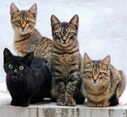
Kittens = Kindle, Litter, Intrigue
Cats [feral] = Destruction
In the process of looking up collective animal nouns when I wanted one, I ran onto several lengthy lists. After reading through a couple of them, I wondered who the heck makes up these amusing and often ridiculous terms. Some make sense; others, not so much.
Photo source: foxnews.com/science/cats
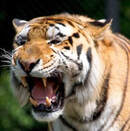
An Ambush of Tigers might be appropriate if you stumbled unsuspectingly on several of them in the jungle, waiting for their dinner to some along. In the zoo, maybe not.
AN ORIGIN OF ORIGINALS: Etymology
Many of these collective nouns for animals were introduced in 1486 with the publication of the Book of St. Albans [or Boke of Seynt Albans] which addresses matters of interest to a gentleman of the times [hawking, hunting, and heraldry]. It also including lists of collective nouns for animals, called terms of venery [hunting].
This treatise, also known by the title The Book of Hawking, Hunting, and Blasing of Arms, is the source of many collective nouns for groups of animals and people that are part of our everyday lexicon.
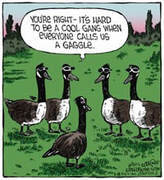
A Gaggle of Geese A Murder of Crows
An Unkindness Of Ravens A Clattering Of Choughs
A Murmuration Of Starlings A Charm Of Goldfinches
The publication is attributed to Dame Juliana Berners (or Barnes), the prioress of an abbey near St. Albans, Hertfordshire. Writing an advice book about hunting seems an unlikely pastime for a prioress, but she was probably part of the medieval aristocracy before she took her orders.
Drawing of Dame Juliana Berneers
Photo source: https://en.wikipedia.org/wiki/Juliana_Berners

What I don’t believe is that a Brit in the 1400s bestowed collective nouns on North American animals they’d never heard of, like An Obstinacy of Buffalo. If Berners didn’t come up with that collective, who did? Who gets to decides on the right collective noun for something?
According to medium.com/@Naturalish, “The short answer is no one.” That may be the reason groups have more than one collective noun. Photo source: hammakerzqmeriel.blogspot.com
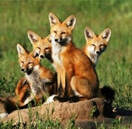
The English language is constantly changing and evolving. Dictionaries add new words and new definitions of old words or drop obsolete words usually twice a year.
ccording to the Merriam Webster, “A Drudge of Lexicographers” continuously review the written and spoken words in thousands of collected texts and transcriptions. When a word reaches a prescribed level of common usage, then it is considered for addition to the dictionary. Some words, particularly those related to a specific field of endeavor, may be used and generally known for a long time before there are enough references to merit inclusion in the dictionary.
 That said, many of the collective nouns for animal groups are in the dictionary but are rarely used in writing or in speech. How does that happen? I can’t tell you how often I’ve read about A Stubbornness of Rhinoceroses. Well, actually, I can. Never! Photo source: smithsonianmag.com/rhinos |
Merriamwebster.com agrees. “In the end, there is no cut and dried rule for how to refer to a particular group of creatures. And this may be why we love the more fanciful collective nouns so much.” ~ https://www.merriam-webster.com/words-at-play/a-drudge-of-lexicographers-presents-collective-nouns
A DELUGE OF DESCRIPTIONS and AN AMPLITUDE OF ALLITERATION
Below l have listed examples of some of the more creative collective nouns for critters, but left out most of the common terms everyone knows and the ones already cited.
Many of these describe fairly well the movements, looks, or habits of the creatures in question, and the imaginations of those who gave birth to these terms have good relationships with alliteration and rhymes.
P.S. I have made absolutely NO attempt to alphabetize either the terms or the animals. Not sorry.
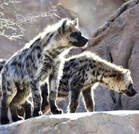 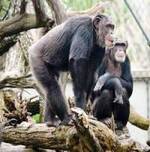 | 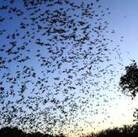 A Caldron of Bats Photo Credit: Flickr / U.S. Fish and Wildlife businessinsider.com/groups-of-animals |
Here’s the deal. If you know of a species out there in the world which doesn’t have a collective noun to its name, the door is open for you … let your fantasy soar. Just be aware that you can have a bunch of just about anything.
Not long ago I came across a species in Madagascar that I had never heard of. The animal was thought to be a type of lemur, but recently has been given its distinct family … the Aye-aye. After giving the problem a great deal of thought, here is my collective noun for these creatures.
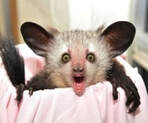
I get the impression the Aye-aye doesn’t like it too much.
□
Sources:
https://medium.com/@Naturalish/the-absurd-truth-behind-collective-animal-nouns-f4a4cde48b4f
http://www.thealmightyguru.com/Pointless/AnimalGroups.html
https://grammar.yourdictionary.com/word-lists/list-of-names-for-groups-of-animals.html
https://www.mentalfloss.com/article/551081/collective-nouns-groups-animals
https://www.businessinsider.com/odd-names-for-groups-of-animals-2016-3
https://grammar.collinsdictionary.com/us/grammar-pattern/collective-nouns_2
https://www.cjr.org/language_corner/animal_collectives.php
https://en.wiktionary.org/wiki/Appendix:Glossary_of_collective_nouns_by_subject
https://www.merriam-webster.com/words-at-play/a-drudge-of-lexicographers-presents-collective-nouns
https://www.etymonline.com/
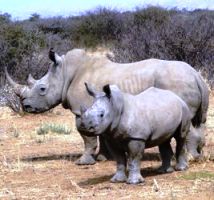
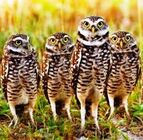
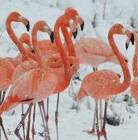
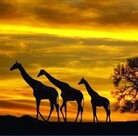
 RSS Feed
RSS Feed